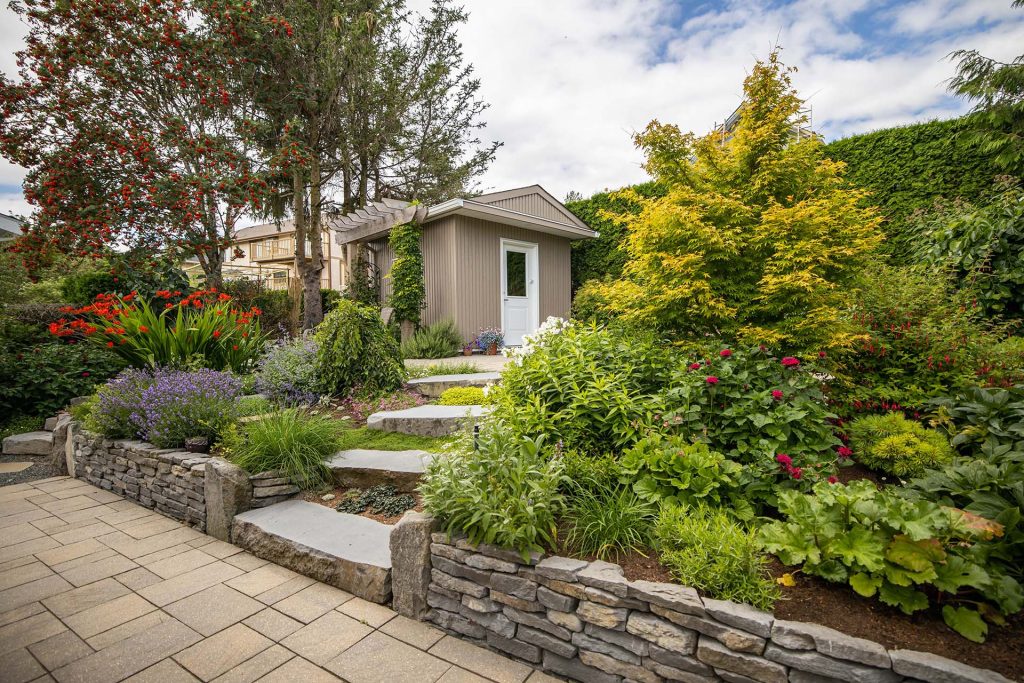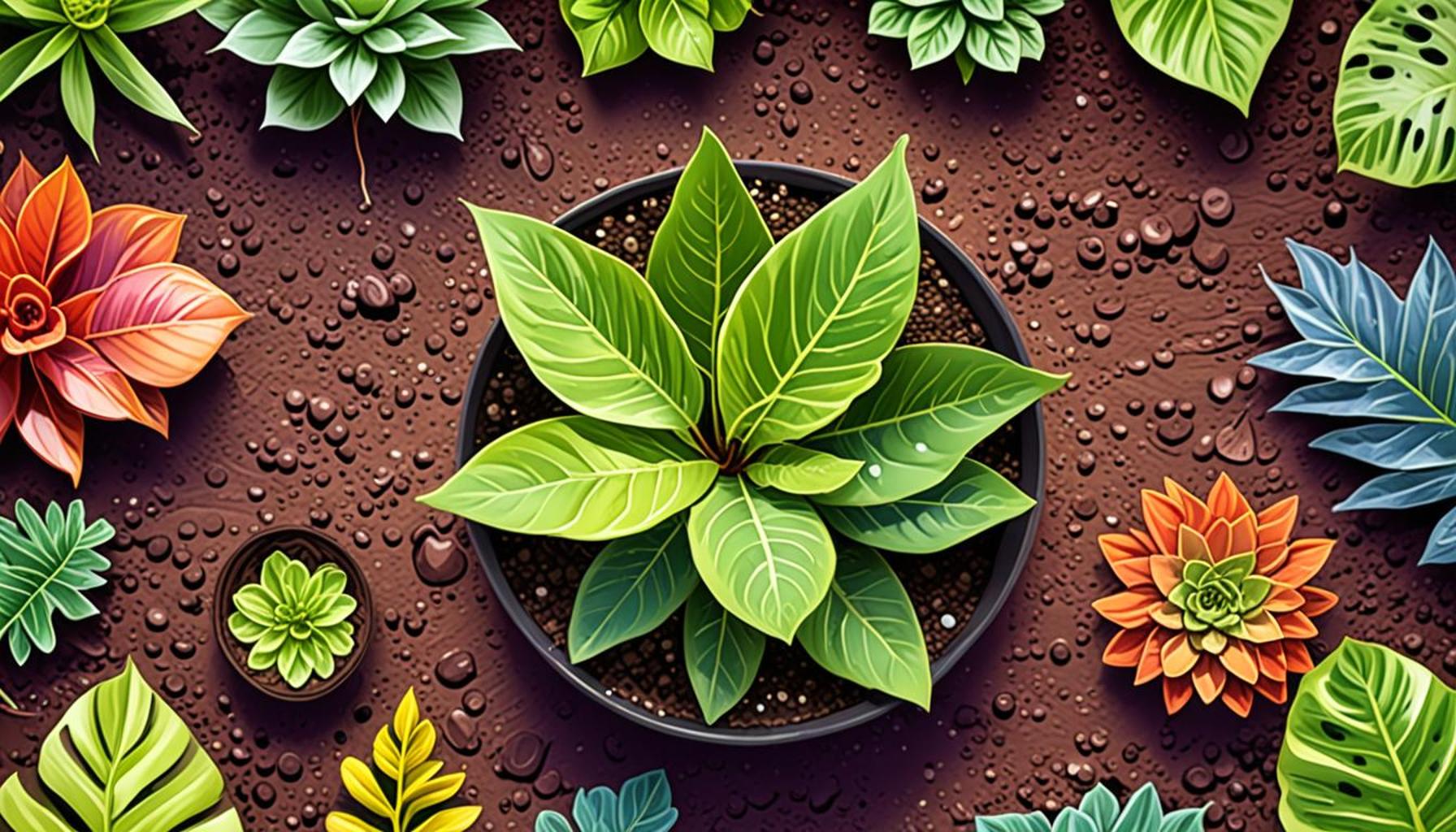How to choose perennial plants for an easy maintenance garden

Creating a Low-Maintenance Oasis
Transforming your outdoor space into a beautiful garden can be a delightful endeavor, one that shouldn’t burden you with excessive toil or time dedication. By selecting the right perennial plants, it is possible to cultivate a stunning landscape that flourishes year after year with minimal intervention. Let’s explore how to achieve an effortless yet captivating garden.
When it comes to selecting the perfect perennials, understanding your environment is paramount. Start by assessing the following factors:
- Climate Suitability: Familiarize yourself with your local hardiness zone, a critical aspect that informs which plants will survive and thrive in your specific climate. For instance, if you live in Zone 5, choosing plants that can withstand cold winters, like Peonies, will ensure successful growth.
- Soil Type: Soil health plays a vital role in plant success. Conduct a soil test to identify pH levels and nutrient content. For example, Coneflowers tend to prefer sandy soils, while Astilbes thrive in richer, moisture-retentive soils.
- Light Requirements: Map out the exposure your garden receives throughout the day. Different plants have varying light needs; for example, Sedums flourish in full sun, whereas Hostas thrive in shaded areas.
Diving into the world of perennials, numerous options stand out for their low-maintenance characteristics:
- Daylilies: These resilient plants are not only easy to care for but also boast a myriad of beautiful colors and sizes. They are drought-resistant and can adapt to various soil types, making them a versatile choice for many gardens.
- Hostas: Known for their lush foliage, Hostas excel in shady conditions and come in several stunning varieties. They require minimal care beyond the occasional watering and can serve as an attractive ground cover.
- Sedums: These succulents thrive in dry conditions, making them ideal for gardens that experience hot summers. Their unique textures and shapes add a striking element to any landscape.
By cultivating these resilient plants, not only do you enhance your garden’s visual appeal, but you also drastically reduce maintenance requirements. This means you can spend more time enjoying your garden rather than laboring over it.
Furthermore, creating a low-maintenance garden encourages biodiversity. You will attract various beneficial insects and wildlife, which can develop a natural ecosystem that minimizes pest problems and supports overall plant health. Research local options and new ideas, and explore how to shape a garden that not only looks beautiful but also complements your lifestyle.

DON’T MISS: Click here to learn more about effective pest management
Essential Considerations for Plant Selection
When embarking on the journey of creating a low-maintenance garden with perennial plants, making informed choices is crucial to achieving the desired results without excessive effort. Each garden space is unique, shaped by specific environmental factors and personal preferences. By carefully considering aspects such as climate, soil type, and light availability, you can select the perfect plants to ensure your garden thrives with minimal fuss.
Climate suitability becomes your first line of defense in establishing a successful garden. Knowing your local hardiness zone helps narrow down your choices significantly. You can find resources, such as the USDA Hardiness Zone Map, which categorizes regions based on their climate resilience. For example, if you reside in the southeastern states (like Florida), you may consider thriving perennials like Blanket Flower or Salvia, while those in the northern states (like Minnesota) might opt for Peonies and Russian Sage to withstand harsher winters.
Next, the quality of your garden’s soil cannot be overlooked. Different perennials have varying preferences for soil conditions, which can affect their growth and overall health. Start by performing a simple soil test to analyze the pH and nutrient levels. This knowledge allows you to choose plants that will naturally thrive in your garden’s conditions. For instance, if your soil leans towards the acidic side, Foxgloves and Astilbes make excellent choices, while alkaline soils will favor Lavender and Catmint.
Light exposure is another fundamental aspect in selecting perennials. Different parts of your garden may receive varying levels of sunlight throughout the day. Monitor your garden space to identify areas of full sun, partial shade, and full shade. This assessment guides you in choosing plants that will perform best in their designated locations. For bright, sun-soaked areas, Coreopsis and Black-eyed Susans are ideal while Astilbes and Ferns will thrive in shaded corners.
Once you’ve assessed the vital environmental factors, you can explore low-maintenance perennial plants that fit your criteria. Among these are:
- Daylilies: Known for their hardy nature, these plants come in diverse colors and are resistant to drought, making them a versatile choice for a low-maintenance garden.
- Russian Sage: With their silvery foliage and aromatic purple flowers, they require little water once established and are particularly appealing to pollinators.
- Ornamental Grasses: Grasses like Blue Fescue and Miscanthus add height and texture to your garden while offering straightforward care.
By implementing these strategies and selecting resilient perennials, you set the stage for a beautiful and easy-going garden that preserves all the joys of nature—without the exhaustive effort. You will significantly reduce time spent on maintenance and can focus on savoring the tranquility your garden brings, allowing it to evolve naturally and dynamically.
Choosing the right perennial plants for your garden can revolutionize the way you tackle your gardening duties. Perennials, by their very nature, offer a myriad of advantages that make them an ideal choice for those seeking a low-maintenance landscape. Here are some essential considerations when selecting perennial plants:
| Category 1 | Category 2 |
|---|---|
| Drought Resilience | Many perennials are adapted to thrive in low-water conditions, reducing your need for frequent irrigation. |
| Seasonal Interest | Perennial plants can offer year-round appeal, providing blooms in various seasons and adding dynamic color to your garden. |
When planning your easy maintenance garden, consider plants like sedums and daylilies, known for their hardiness and vibrant colors. Additionally, ensure you pick perennials suited to your local climate and soil types, as this will reduce the overall care you need to provide. Understanding your garden’s microclimate can also lead to smarter planting choices that meet both aesthetic and functional gardening goals. As you delve into the world of perennial gardening, you’ll uncover how these resilient plants can significantly contribute to a sustainable and visually stunning landscape.
DIVE DEEPER: Click here to discover more
Choosing the Right Perennials for Diverse Garden Roles
Once you’ve grasped the essential environmental factors, it’s time to delve deeper into the specific roles that perennial plants can play in your garden. Understanding these roles allows you to create visual interest and functional beauty in your landscape while maintaining low maintenance. Consider using perennials not only for their aesthetics but also for their ability to support biodiversity, attract beneficial wildlife, and enhance the ecological balance of your garden.
Create Layers for Visual Depth
One secret to achieving an easy maintenance garden lies in designing plant layers that create visual depth and structure. Strive for combinations that include tall, medium, and short plants. Taller perennials can act as natural backdrops, while shorter varieties can create a lush foreground. For example, place majestic Delphiniums or Hollyhocks at the back of a bed, and nestle enchanting Sedums or Pansies in the front. This layering not only provides interest throughout the season but also minimizes the opportunity for weeds to take root in exposed soil.
Utilizing Perennial Partnerships
Another intriguing strategy involves exploring companion planting with perennial plants. Certain species, when planted together, can complement each other while reducing the need for maintenance. For example, pairing Echinacea with Rudbeckia enhances their visual appeal, while the deeply rooted Echinacea may help improve soil aeration, benefiting both plants. Moreover, planting Milkweed can attract Monarch butterflies and other pollinators, while simultaneously attracting beneficial insects that naturally control pest populations.
Seasonal Interest and Wildlife Support
Consider the seasons when selecting perennials that offer year-round interest and wildlife support. Look for varieties that bloom at different times, ensuring that something is always coming into flower throughout the growing season. For example, Peonies bloom in spring, followed by the mid-summer show of Daylilies and then the late-season allure of Asters and Mum. Additionally, choose plants that provide food and habitat for pollinators and birds. Plants like Bee Balm not only draw in native bees but also provide foliage for caterpillars, fostering a thriving ecosystem.
Consider Maintenance Levels
It’s also vital to assess the maintenance levels associated with specific perennials. While some perennials are truly low-maintenance, others may require moderate care or occasional division to keep them healthy. Recognizing the upkeep associated with each chosen species can prepare you for the long haul. Plants like Lavender and Daylilies require less intervention compared to varieties that may need deadheading or regular pruning.
Native Plants: An Eco-Friendly Option
Incorporating native plants into your perennial selection can yield substantial benefits for your garden. Native plants are typically well-adapted to the local climate and soil conditions, making them easier to maintain. Additionally, these plants often require fewer resources such as water and fertilizers, contributing to environmental conservation. For example, Wildflowers like Butterfly Weed or Black-eyed Susans can thrive in various conditions while offering stunning color and attracting native pollinators.
Ultimately, by exploring these diverse elements in choosing the right perennial plants, you can cultivate a garden that embodies beauty and ease, inviting nature and tranquility into your outdoor space. Through a thoughtful selection of plants that fulfill various roles and partnerships, you can effortlessly enjoy a low-maintenance, vibrant garden all year long.
DISCOVER MORE: Click here for natural pest control solutions!
Conclusion
Choosing the right perennial plants for an easy maintenance garden involves a blend of thoughtful planning and a deep understanding of your garden’s unique environment. By focusing on key aspects such as seasonal interest, visual layering, and plant partnerships, you can create a stunning landscape that thrives with minimal intervention. Utilizing native plants not only enhances your garden’s resilience but also promotes an eco-friendly habitat for local wildlife. Remember, each plant you select has a role in the ecosystem, supporting beneficial insects while reducing the need for chemical interventions.
Moreover, by evaluating the maintenance levels associated with each perennial, you can curate a garden that aligns with your lifestyle and gardening aspirations. Combining varieties that bloom in succession ensures your garden remains vibrant throughout the year, offering both visual charm and essential support to pollinators. The key is to embrace diversity in your plant selection, as this fosters a more balanced and sustainable ecosystem.
Ultimately, cultivating an easy maintenance garden enriched with perennial plants is not merely a choice of aesthetics but a commitment to sustainable gardening practices. As you embark on this journey, keep exploring, experimenting, and learning about different perennials. This ongoing discovery will not only yield beautiful results but also deepen your connection to the natural world, turning your garden into a sanctuary of tranquility and beauty.



